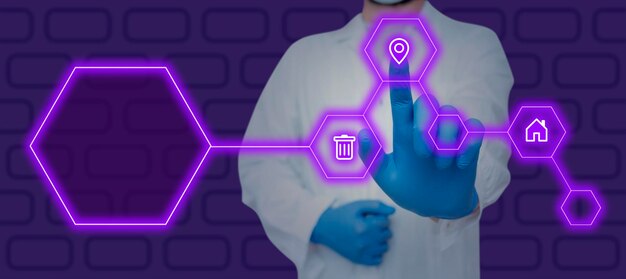Las Vegas Cybersecurity Firm Weighs In: Preparing for Future Technology Outages – Strategies and Best Practices
Technology outages, whether caused by natural disasters, cyber-attacks, or infrastructure failures, can have a
devastating impact
on businesses and organizations. In today’s digital age, it is essential to be prepared for such events to minimize downtime and safeguard critical data. Las Vegas-based
cybersecurity firm,
TechGuard Security, shares some strategies and best practices to help organizations brace for future technology outages.
Conduct a Business Impact Analysis
The first step in preparing for technology outages is to conduct a business impact analysis (BIA). This process involves identifying critical business functions and determining the potential financial, operational, and reputational impact of an outage. The BIA will help organizations prioritize their response and recovery efforts in case of a technology failure.
Implement Redundancy and Backup Systems
Redundancy and backup systems are essential in mitigating the risk of technology outages. Implementing multiple servers, power supplies, or communication lines can ensure business continuity during an outage. Cloud-based solutions offer a cost-effective and efficient alternative for organizations looking to implement backup systems.
Develop an Incident Response Plan
Incident response plans (IRPs) are critical in managing technology outages effectively. IRPs should outline the steps to be taken during an outage, including communication protocols, recovery procedures, and roles and responsibilities. Regularly testing and updating IRPs is necessary to ensure their effectiveness.
Educate Employees
Employee education plays a crucial role in preventing technology outages. Regular training sessions on cybersecurity best practices, data protection, and disaster preparedness can help minimize the risk of human error or external threats. Employees should also be aware of the organization’s IRPs and their role in implementing them during an outage.
5. Perform Regular Risk Assessments
Risk assessments are essential in identifying potential vulnerabilities and threats that could lead to technology outages. Regular risk assessments can help organizations prioritize their security efforts, allocate resources effectively, and implement appropriate controls to mitigate risks.
6. Partner with a Managed Security Services Provider
Managed security services providers (MSSPs) offer a cost-effective and efficient solution for organizations looking to strengthen their cybersecurity posture. MSSPs can provide real-time threat monitoring, incident response, and vulnerability management services to help organizations mitigate the risk of technology outages.
7. Invest in Disaster Recovery Solutions
Disaster recovery solutions, such as data backup and business continuity plans, can help organizations recover quickly from technology outages. Investing in disaster recovery solutions can provide peace of mind and minimize the impact of an outage on the organization’s operations.
8. Implement Multi-Factor Authentication
Multi-factor authentication (MFA) is an essential security measure that can help prevent unauthorized access to critical systems and data during a technology outage. Implementing MFA can add an extra layer of security, making it more difficult for attackers to gain access.
9. Consider Implementing a Disaster Recovery as a Service (DRaaS) Solution
Disaster Recovery as a Service (DRaaS) is an outsourced solution that allows organizations to replicate their IT infrastructure and recover critical data from a remote location. DRaaS solutions offer faster recovery times and lower costs compared to traditional disaster recovery methods.
10. Ensure Data Backups are Regularly Tested and Updated
Regular testing and updating of data backups is essential to ensure their effectiveness during a technology outage. Performing regular tests can help organizations identify any issues or inconsistencies with their backups and take corrective actions to address them.
Conclusion
Technology outages can have a significant impact on businesses and organizations. By following these strategies and best practices, Las Vegas-based cybersecurity firm, TechGuard Security, recommends that organizations can better prepare for future technology outages and minimize their impact. Regularly reviewing and updating these measures is essential to ensure their effectiveness in the ever-evolving threat landscape.

The Growing Importance of Cybersecurity Amidst our Increasingly Technology-Dependent World
As we continue to advance in the digital age, technology has become an integral part of our daily lives.
From communicating with loved ones to conducting business transactions, and even managing our homes, technology has made the world more connected than ever before. However, this reliance on technology comes with a growing concern:
The Potential Impact of Technology Outages
Technology outages can cause significant disruptions, impacting everything from financial transactions
to critical infrastructure and even public safety.
The costs of these outages can be substantial, with estimates suggesting that a single hour of downtime for a large enterprise can cost millions of dollars.
Enter [Company Name]: Your Trusted Partner in Cybersecurity
Amidst this ever-evolving landscape, [Company Name] has emerged as a leading Las Vegas cybersecurity firm
Providing Expert Solutions to Protect Your Business and Mitigate the Risks of Technology Outages
Our team of cybersecurity professionals is dedicated to helping businesses like yours navigate this complex environment and mitigate the risks associated with technology outages. With a focus on threat intelligence, risk assessment, and incident response,
[Company Name] offers comprehensive cybersecurity solutions tailored to your unique needs.
Whether you’re looking to protect your business from advanced threats or simply want to ensure that your IT infrastructure is running smoothly, [Company Name] has the expertise and experience you need to stay ahead of the curve.
Contact us today to learn more about how we can help your business thrive in the digital age

Understanding Technology Outages
Technology outages refer to any disruption or interruption in the normal functioning of technological systems. These outages can take various forms and affect different types of technologies, including power grids, internet connections, and software applications.
Definition and explanation of technology outages
Power outages:
Power outages occur when the electrical power supply is disrupted, causing a loss of electricity to homes, businesses, or entire communities. Power outages can be caused by various factors, including natural disasters such as hurricanes and storms, human error, or technical issues with the power grid.
Internet outages:
Internet outages refer to any disruption in the availability or accessibility of internet services. These outages can be caused by various factors, including natural disasters such as earthquakes and storms, cyber attacks, or technical issues with internet service providers.
Software glitches:
Software glitches are errors or bugs in software applications that can cause the program to crash, freeze, or malfunction. Software glitches can be caused by various factors, including coding errors, compatibility issues, or user error.
Discussion on the causes and consequences of technology outages
Causes:
Technology outages can be caused by various factors, including natural disasters such as earthquakes, hurricanes, and storms, cyber attacks, and human error. Natural disasters can damage electrical power lines, telecommunications infrastructure, and data centers, leading to widespread outages. Cyber attacks can cause internet outages or software glitches by disrupting server connections or corrupting data. Human error, such as accidents or misconfigurations, can also lead to technology outages.
Consequences:
Technology outages can have significant economic, reputational, and safety risks. Economic losses can result from business downtime or lost productivity during an outage. Reputational damage can occur if a company is unable to provide essential services during an outage, leading to customer dissatisfaction and lost business. Safety risks can also be significant, particularly during power outages or internet disruptions that affect emergency services or critical infrastructure.

I Preparing for Technology Outages: Insights from [Company Name]
Importance of having a disaster recovery plan in place:
- Regularly testing the plan: It is crucial to ensure that your disaster recovery plan is not only well-designed but also effective. Regular testing and updates are necessary to identify any potential weaknesses or inefficiencies, allowing your team to make improvements as needed.
- Backing up essential data: Data is the backbone of every business. Losing it can result in catastrophic consequences. Therefore, keeping your essential data backed up and secure should be a priority. Implement robust backup strategies, encrypt your data, and maintain multiple copies to safeguard against potential losses.
Role of cybersecurity in preventing technology outages:
Cybersecurity plays a vital role in maintaining business continuity. By implementing strong security protocols, you can significantly reduce the risk of experiencing technology outages due to cyber attacks or breaches.
- Implementing strong security protocols: Use multi-factor authentication, network segmentation, and access controls to secure your systems.
- Keeping software up-to-date: Regularly patching vulnerabilities is essential for maintaining the security of your systems. Installing updates as soon as they become available can help protect against known threats.
Building a culture of preparedness within the organization:
Creating a culture of preparedness is key to mitigating the impact of technology outages. Empower your employees with the necessary knowledge and resources to respond effectively during an outage.
- Training employees on response procedures: Ensure that all staff members are familiar with the company’s disaster recovery plan and their specific roles during an outage.
- Encouraging open communication and collaboration: Encourage employees to share information, ask questions, and collaborate during an outage. A transparent and supportive work environment can help your team navigate challenges more effectively.

Best Practices for Mitigating the Impact of Technology Outages
Planning for Essential Services to Continue during an Outage
- Identifying critical functions and prioritizing them: It is essential to identify the key business processes that must continue during a technology outage. Prioritize these functions based on their importance to the organization and implement measures to ensure they can continue even if the primary technology system goes down.
- Providing alternatives such as backup systems or outsourcing: Organizations should have backup systems in place to ensure essential services can continue during an outage. Additionally, consider outsourcing critical functions to a trusted third party to maintain business continuity.
Building a Strong Communication Strategy
- Setting up multiple channels for internal and external communications: During a technology outage, communication becomes crucial. Organizations should set up various communication channels, such as email, text messaging, social media, and phone trees, to ensure that all stakeholders are kept informed.
- Creating templates for crisis messaging to keep stakeholders informed: Prepare crisis messaging templates that can be customized and shared with various stakeholders during an outage. These messages should provide clear instructions on the situation, alternative solutions, and expected resolution time.
Reviewing Business Continuity Plans Regularly
- Conducting risk assessments and updating plans as needed: Periodically review business continuity plans to ensure they are up-to-date and effective. Identify new risks and update the plans accordingly.
- Implementing contingency measures to minimize the impact of an outage: Organizations should implement contingency measures, such as redundant systems and disaster recovery plans, to minimize the impact of a technology outage. Regular testing of these measures is essential to ensure they are effective.

Conclusion
In the recent [Company Name] article, we delved into the significant impact that technology outages can have on businesses. Key takeaways from the piece included the high cost of downtime, the importance of having a comprehensive disaster recovery plan, and the need for continuous monitoring and maintenance to prevent outages.
Recap of Key Takeaways from the Article and Insights Provided by [Company Name]
[Company Name] emphasized that technology outages can lead to significant financial losses, damage to reputation, and decreased productivity. Moreover, they highlighted the importance of having a well-prepared disaster recovery plan in place. This includes regular data backups, testing of backup systems, and having a clear communication strategy for notifying employees and customers of any potential disruptions.
Encouragement for Organizations to Prioritize Technology Outage Preparedness
Organizations cannot afford to ignore the risk of technology outages. The cost of downtime is only increasing, and the consequences can be far-reaching. It is crucial for businesses to prioritize technology outage preparedness by investing in robust infrastructure, implementing reliable backup systems, and providing regular training for employees.
Final Thoughts on the Importance of Being Proactive and Resilient in the Face of Potential Outages
Being proactive and resilient is key to minimizing the impact of technology outages. Companies that take a preventative approach, invest in redundancy and have a solid disaster recovery plan in place are more likely to recover quickly and with less disruption. In today’s interconnected world, where technology underpins much of our daily operations, it is essential that we all do our part to ensure that our systems are as robust and resilient as possible.







